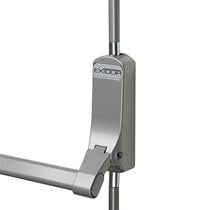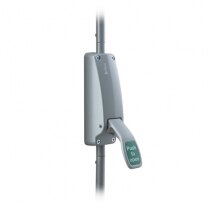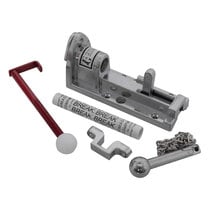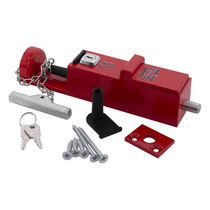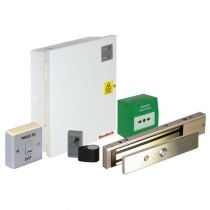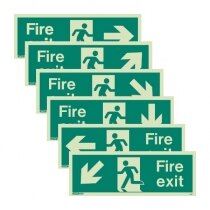Sunday 21st April 2024
What is the difference between fire doors and fire exits?
A fire door is an internal door, between one room or corridor and another. Certified fire doors of solid timber construction are designed to halt the spread of smoke and flames for a minimum specified length of time. Typically, this is 30 minutes (FD30), when closed. This allows fire doors to compartmentalise the building, so that the fire can be more easily controlled by fire fighters.
A fire exit is a final exit door from a building, meaning that it leads to the outside. These doors are not usually fire rated, as they are not designed to hold back flames and smoke. Fire exit doors are designed to allow quick and unhindered escape through a well-lit door into a place of safety. Often, these doors also prevent unauthorised access from the outside. Fire exit doors should never be obstructed, open easily and, where possible, in the direction of traffic flow.

Do final exit doors need to be fire rated?
Final exit doors, or fire exits, do not usually need to be fire rated, unless the need is identified by the fire risk assessment. Unlike fire door hardware, exit hardware, such as panic bars and push pads, therefore does not need to be fire rated. Nonetheless, exit hardware must be regularly tested and maintained so that it can be effective in an emergency.
Should fire exits have push pads or panic bars?
In environments like an office, where staff are familiar with the layout, it is permissible to install push pads. In buildings which are open to the public, such as cinemas and shops, fire exits doors must be fitted with panic bars. These are easier to operate for someone who is unfamiliar with the environment.

Can a fire exit be locked?
For security reasons, fire exits can be locked to the outside with an external access device. This can be secured with a traditional lock and key, or a pin pad and code. However, fire exits which serve as emergency exits for the public can never be locked from the inside. Exit hardware (push pads or panic bars) must therefore be fitted to the inside of a fire exit door.
Fire doors to storage rooms, or restricted areas of a building, can be locked. This can be done with access control devices, or a fire rated lock and key system. This hardware must be installed by a qualified professional, to the manufacturer’s requirements. It is the responsibility of key holders to ensure that no one is ever locked in to an area that they cannot freely leave.
Can a fire exit door be left open?
Given that fire exits are not involved in compartmentation, it is not a fire risk to keep open a final exit door to a building. This is why fire exit doors do not have door closers fitted. Fire doors must be kept shut when not in use, so that they can be effective in the event of a fire. This has led to the common misconception that a fire exit door cannot be kept open.
Therefore, assuming it is not a security risk, it is permissible to prop open a fire exit; but never a fire door on an escape route (unless certified fire door retainers are installed).
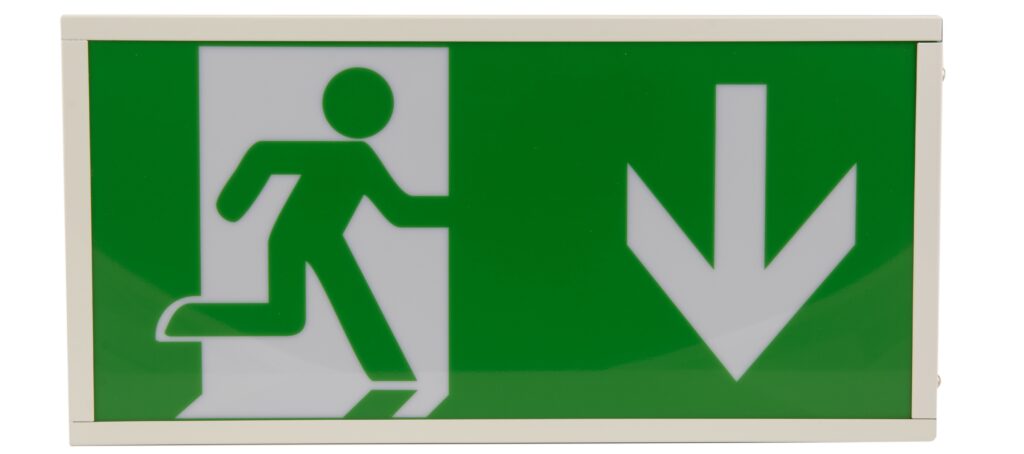
Do fire doors need signage?
Fire doors should have a small blue Fire Door Keep Shut sign fitted on both sides. This informs building users, including staff and the public, that the door plays a role in fire safety, and encourages them to behave accordingly. For the purpose of fire risk assessments, fire door maintenance, and fire escape plans, the fire door’s certification sticker should also be located on its top edge.
Similarly, fire exits should be clearly marked to ensure that occupants of a building can quickly identify an escape route in an emergency. Best practice dictates that fire exit signs are fitted above fire exits. In larger and more complicated buildings, additional signage should be fitted to direct occupants to the nearest fire exit.
For more information about fire doors, fire exits, and the legal requirements, see our help guides. You can also contact our friendly fire door team on 0800 433 4289 or by emailing firedoors@safelincs.co.uk.

